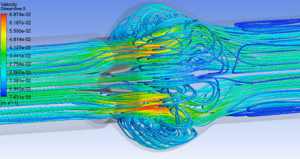Heart valve simulation offers unprecedented insights into the function, health, and treatment of vital components of the human heart. This blog explores the heart valve simulation, its significance, and prospects. Heart Valves and Simulation: Simulation can be used in many capacities starting from design, to testing heart valve devices in vivo.
Various valvular diseases can affect the valvular function. Depending on the severity and co-morbidities, treatment options can be broadly categorized as: i) Valve Repair where native valve is repaired to restore its function OR ii) Valve Replacement where an external valve is implanted Figure 1: Structure of heart and types of heart valves [1] One of the key advantages of simulation is that it computes flow metrics with finer spatial and temporal resolution than possible with any available in vivo imaging technique. It provides the flexibility to analyze and understand minute details enabling strategic decisions based on the overall performance evaluation.

Moreover, simulation can measure parameters that cannot be measured easily in clinics or experimentally. Simulation can provide the thrombogenicity potential quantitively (e.g.
an estimate of residence time) and hence, thrombogenicity potential of the blood. It can also provide the stress and strain results on the heart valve with unparalleled resolution. It can predict the strain rate based accumulated damage of the blood inside the heart.
This information can be critical in charac.























